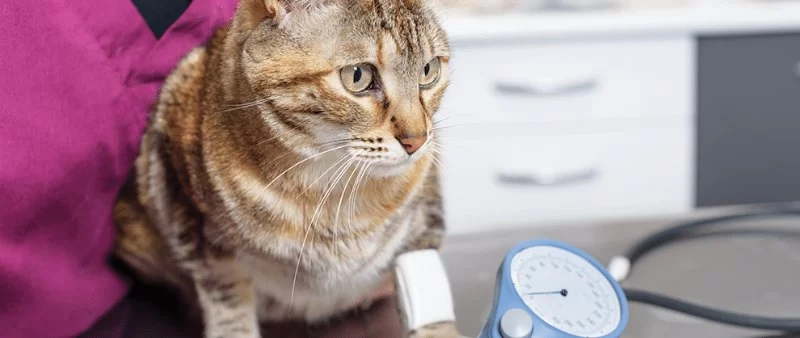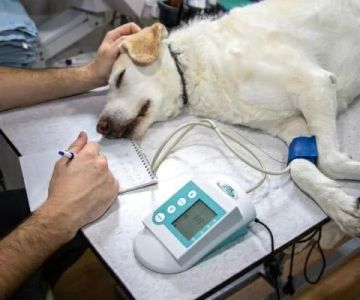- 1 - #understanding-pet-blood-pressure - Understanding Pet Blood Pressure
- 2 - #why-monitoring-your-pets-blood-pressure-matters - Why Monitoring Your Pet’s Blood Pressure Matters
- 3 - #how-veterinarians-measure-pet-blood-pressure - How Veterinarians Measure Pet Blood Pressure
- 4 - #how-to-monitor-your-pets-blood-pressure-at-home - How to Monitor Your Pet’s Blood Pressure at Home
- 5 - #common-signs-of-hypertension-in-pets - Common Signs of Hypertension in Pets
- 6 - #keeping-your-pet-healthy-through-regular-checkups - Keeping Your Pet Healthy Through Regular Checkups
1. Understanding Pet Blood Pressure
Just like humans, pets rely on stable blood pressure to keep their organs functioning properly. Blood pressure measures the force of blood against the walls of the arteries, and when it becomes too high or too low, it can lead to serious health problems. While many pet owners may not think about blood pressure monitoring, it’s an essential part of maintaining long-term health—especially for older pets and those with chronic conditions.
In healthy animals, blood pressure helps deliver oxygen and nutrients to vital organs like the heart, kidneys, and brain. However, when pressure increases (a condition known as hypertension), it can silently damage these organs over time. This is why understanding and tracking your pet’s blood pressure can make a huge difference in detecting problems early.
2. Why Monitoring Your Pet’s Blood Pressure Matters
Monitoring your pet’s blood pressure is more than just a precaution—it’s a key aspect of preventive health care. High blood pressure in pets often develops without visible symptoms until significant damage has occurred. Dogs and cats with untreated hypertension can develop kidney disease, vision loss, or even heart failure.
For example, in cats, hypertension is often associated with kidney or thyroid disease. In dogs, it may indicate underlying heart issues or hormonal imbalances. By monitoring blood pressure, veterinarians can identify these conditions early and start treatment before irreversible damage occurs. At Hidden Brook Veterinary, our experienced team emphasizes regular monitoring as part of a comprehensive wellness plan for pets of all ages.
3. How Veterinarians Measure Pet Blood Pressure
Veterinarians use specialized equipment designed specifically for animals to measure blood pressure accurately and safely. The two most common methods are Doppler and oscillometric monitoring:
- Doppler Method: This method uses a small cuff placed on your pet’s leg or tail, along with a Doppler probe that detects blood flow sounds. It’s often the most accurate option, especially for cats and small dogs.
- Oscillometric Method: Similar to human blood pressure machines, this method automatically inflates a cuff to measure the pressure. It’s ideal for larger, calm pets and provides both systolic and diastolic readings.
During a vet visit, the procedure is quick and painless. Most pets remain calm, especially when handled gently. Consistent readings over time give vets valuable insights into your pet’s cardiovascular health.
4. How to Monitor Your Pet’s Blood Pressure at Home
While professional monitoring at a veterinary clinic is essential, pet owners can also help by learning to track changes in their pets’ health at home. Home blood pressure monitoring is becoming more accessible thanks to portable devices designed for pets. However, accuracy depends on using the right size cuff and ensuring your pet is calm and relaxed during measurement.
Here are a few key tips for at-home monitoring:
- Keep your pet in a quiet, comfortable environment to reduce stress.
- Measure at the same time each day for consistent readings.
- Record your readings and share them with your vet during checkups.
If you’re unsure about using a home device, the team at Hidden Brook Veterinary can demonstrate the proper technique and help you interpret your pet’s readings.
5. Common Signs of Hypertension in Pets
Because high blood pressure often develops silently, knowing what to look for is crucial. Common signs of hypertension in pets include:
- Sudden changes in vision or pupil dilation
- Disorientation or unsteady movement
- Nosebleeds or bleeding from the eyes
- Seizures or fainting spells
- Increased drinking or urination, often linked to kidney strain
If you notice any of these symptoms, it’s important to seek veterinary care immediately. High blood pressure can indicate underlying conditions that need treatment, and early intervention can prevent complications. Many pets with hypertension live long, healthy lives when properly managed with medication, diet, and regular monitoring.
6. Keeping Your Pet Healthy Through Regular Checkups
Routine veterinary checkups are the cornerstone of preventive pet care. Regular blood pressure monitoring allows veterinarians to detect health issues early, adjust treatments, and ensure your pet stays healthy and active. Combining professional evaluations with at-home observations gives you the best chance to maintain your pet’s overall wellness.
At Hidden Brook Veterinary, we specialize in compassionate, personalized care for pets. Our experienced team uses advanced diagnostic tools to monitor and manage your pet’s blood pressure, helping prevent potential health crises before they arise. Whether you have an aging cat or an active dog, consistent monitoring ensures your furry friend enjoys a long, happy life.
Don’t wait for symptoms to appear—schedule a wellness exam today with Hidden Brook Veterinary and learn how proactive blood pressure monitoring can protect your pet’s future health.










